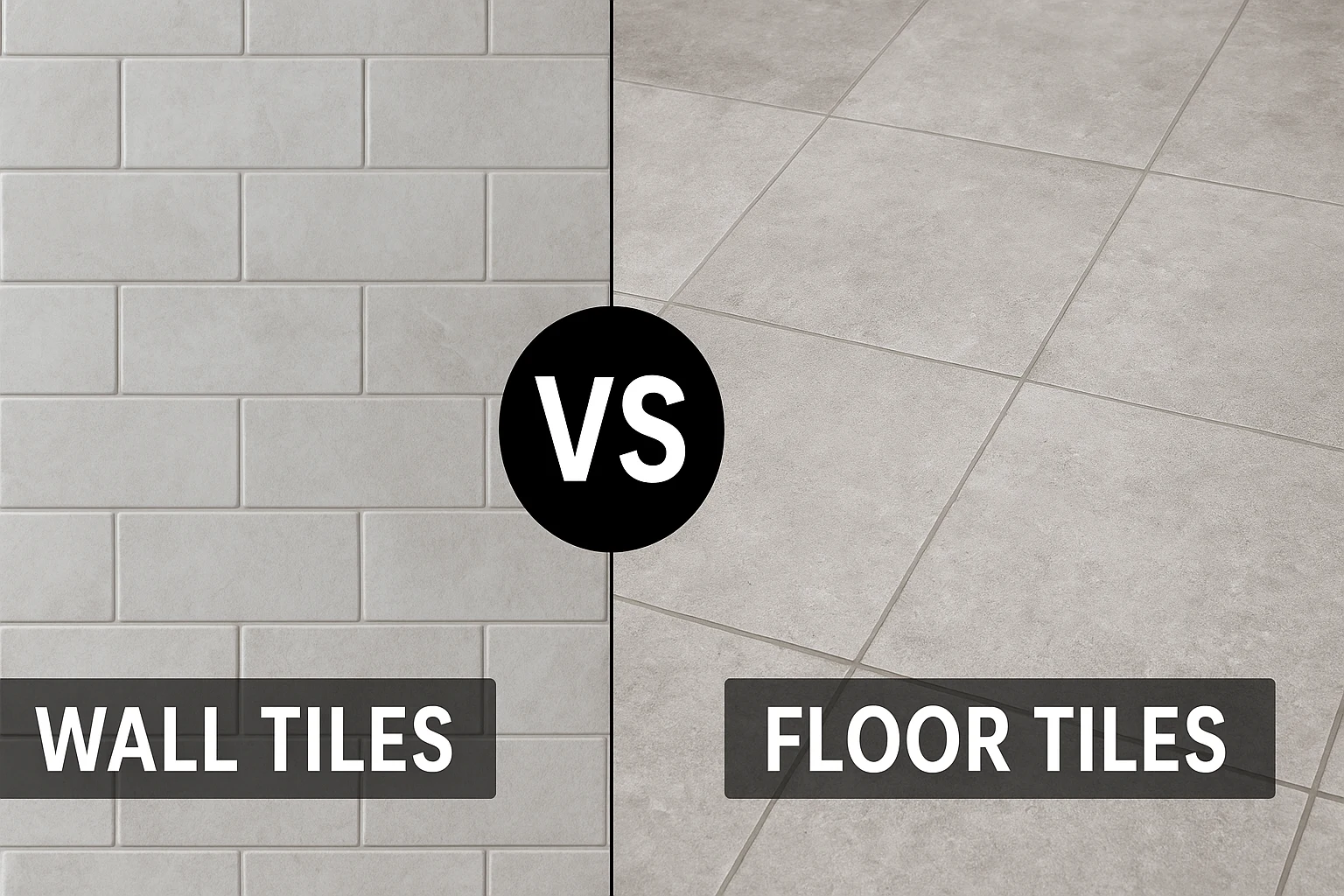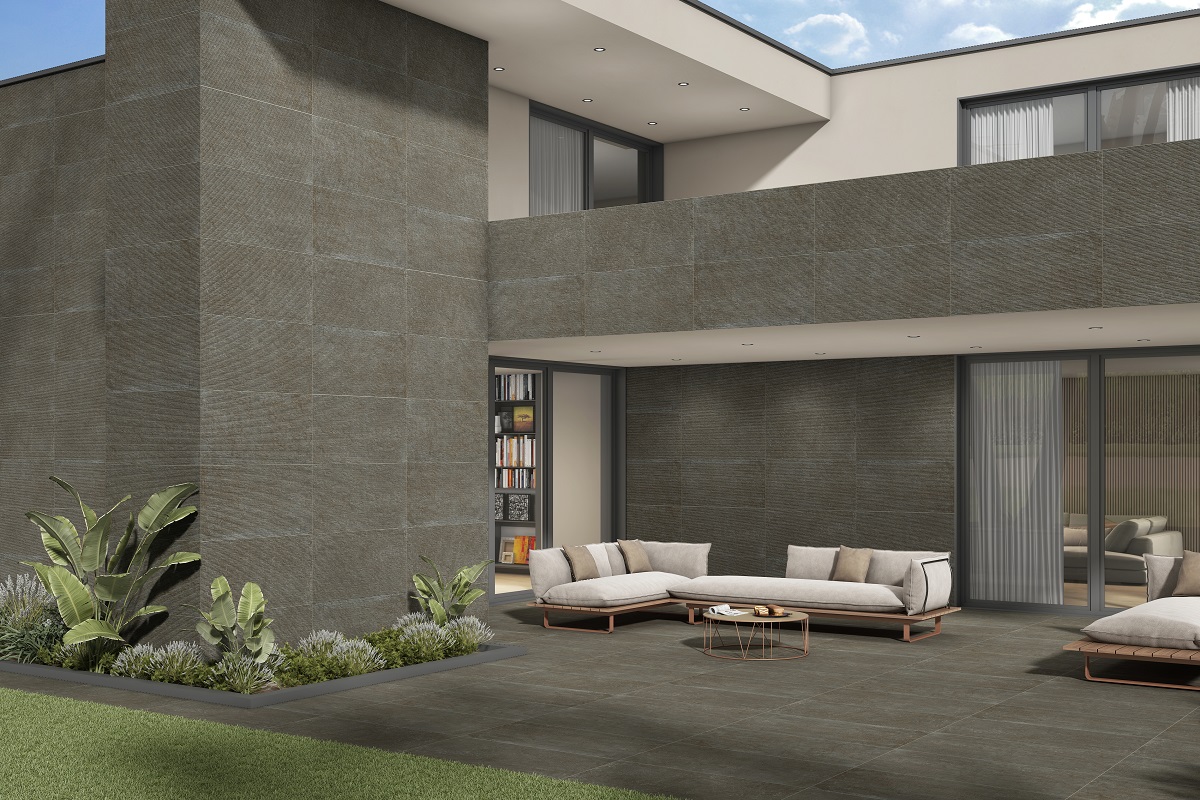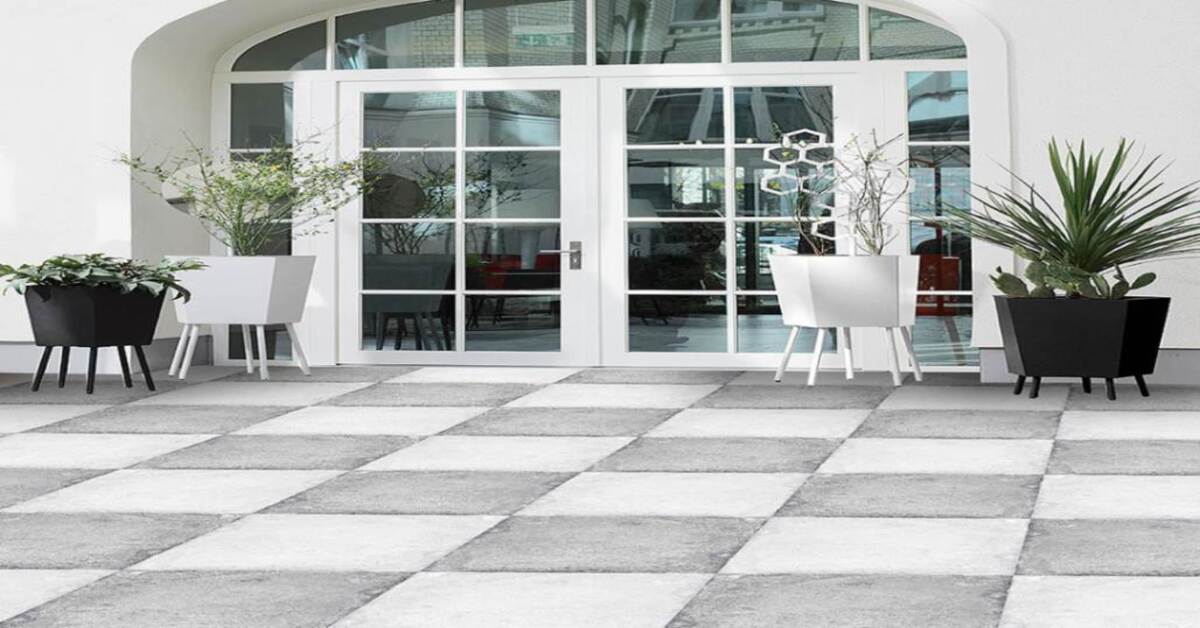
Wall Tiles VS Floor Tiles: What’s The Difference?
As the tile industry expands, hundreds of thousands of designs, sizes, patterns, and finishes are introduced daily by leading tile brands in the market. But behind these aesthetics and charms goes numerous hours of research on how to manufacture the tile, what material to use, what thickness is the best for the tile, where it can be installed, etc.
All these considerations segregate the tiles into two basic categories – wall tiles and floor tiles. While the designs may seem lucrative, it’s important to know the difference in characteristics of these tiles to cater to your customers better.
Let us take a look at how wall tiles differ from floor tiles in terms of various parameters.
How Are Wall Tiles Different From Floor Tiles?
Wall and floor tiles may look like siblings in the same style family, but their journey begins with entirely different manufacturing goals. From the thickness and finish to the strength and surface texture, each tile is designed with a purpose. Whether it’s to elevate a vertical space or endure daily footsteps, the materials, processes, and detailing involved ensure that each tile brings both beauty and functionality to where it’s meant to be.
1.) Durability & Water Absorption
Talking about durability, floors endure greater foot traffic and water exposure due to regular cleaning. Floor tiles endure heavy foot traffic, they are more durable and scratch-resistant than wall tiles. Also, floor tiles are less porous than wall tiles, which sustains their beauty and hygiene.
2.) Thickness
We all know how gravity works. Now, this concept, when talked in terms of tile installation, decides how thick a tile should be. For instance, a tile that is installed flat on a floor eliminates the possibility of it falling further, thus it can bear heavy loads. When we talk about a tile that needs to be vertically installed on a wall, the gravitational pull creates a risk of the tile falling.
That’s why floor tiles are usually thicker than wall tiles, as wall tiles need to be light enough to stick better with the walls, as excessive weight can pull them down.
3.) COF Rating (Slip Resistance)
COF stands for Coefficient of Friction, and it tells us how smooth or rough the tile surface is. Wall tiles have a lower COF rating as there is no need for them to be frictional other than aesthetically required.
On the other hand, floor tiles have a higher COF rating because, as good as those shiny spotless tiles look, they are prone to slippage. That’s why, for safety reasons and to prevent slippage, especially in wet areas like bathrooms or pool areas, floor tiles have a frictional surface.
4.) PEI Rating (Wear Resistance)
PEI stands for Porcelain Enamel Institute ratings, which test the strength and durability of the glaze of the tile. The scale of strength measurement is from 1-5, 1 being the softest and 5 being the hardest. Since floor tiles need a heavier load-bearing capacity, they have a PEI rating of 3-5, whereas wall tiles have a PEI rating of 1 as they’ll not be enduring any foot traffic.
5.) Cost
Now that we have covered the major points of difference between floor and wall tiles, it’s time to jump into some indirect pointers. For instance, all the above parameters like durability, thickness, PEI, COF rating, point towards the variation in manufacturing process. Since floor tiles are more durable and heavier, they’ll generally cost more than wall tiles.
Although the cost factor can vary as per design, size and pattern and finish, floor tiles usually cost more than wall tiles.
6.) Size & Shape
Wall tiles are often slimmer and come in smaller square or rectangular shapes—perfect for vertical placement and creative patterns. Floor tiles, on the other hand, are built for strength and space. You’ll usually find them in larger sizes, offering a clean, seamless look that handles foot traffic with ease.
While wall tiles focus on aesthetics and detail, floor tiles combine form with function, often using bigger squares to create bold, grounded visuals.
Key Takeaways
Now that we have discussed the difference between wall and floor tiles, you can assure your customers that the design they asked for is not gonna be a great fit for their space. You can guide them better on how the technical parameters of tiles are what their space needs than just mere design strokes.
Get premium-quality wall and floor tiles from Spenza Ceramics, one of the leading tile brands in India. Our tiles are as durable, utilitarian as they are beautiful. Visit our nearest tile dealers today and choose a tile that gives that aesthetic voice to the space.
Frequently Asked Questions
1.) Can I use floor tiles on the wall and vice versa?
Technically, yes—but it’s not always a great idea. Floor tiles can be used on walls if the weight is manageable, but wall tiles are too thin and smooth for safe use on the floor. Always check the specifications before mixing them up.
2.) Why are wall tiles generally cheaper than floor tiles?
Wall tiles are thinner, lighter, and don’t need to withstand foot traffic, so the material costs are less in manufacturing processes, making them more cost-effective.
3.) How can I tell if a tile is meant for floors or walls?
The product label usually mentions the intended use. But if in doubt, check the thickness, PEI rating (wear resistance), and COF rating (slip resistance). Floor tiles are thicker, tougher, and less slippery.
4.) Do wall tiles need to be water-resistant like floor tiles?
Not necessarily. While some wall tiles—especially in kitchens and bathrooms—should resist water, they don’t need to be as water-resistant as floor tiles, which face constant cleaning and foot traffic.
5.) Is there a visual difference between floor and wall tiles?
Yes. Wall tiles are often more decorative and come in intricate designs or glossy finishes. Floor tiles are built for strength and tend to have matte or textured finishes to reduce slipperiness.

Explore our full range of Tiles
Find the perfect tiles for your area with our huge range of styles, colours, and finishes, No matter you are looking tiles for kitchen, bathroom, parking, exterior or interior spaces, we have it all.
Shop Now








